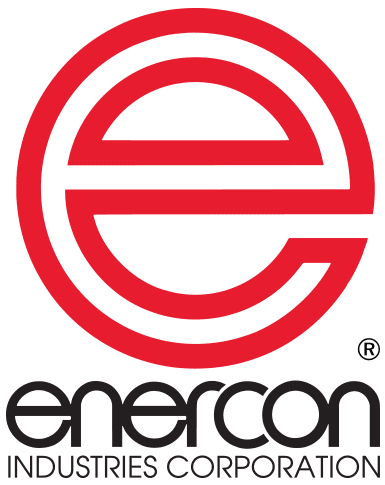Atmospheric Plasma – What is it and what is it good for
You may already know something about the benefits of plasma treatment; higher treatment (dyne) levels, extended life of treatment over time, reduced degradation of surface morphology and elimination of backside treatment.
Enercon’s Plasma3™ & Plasma4™ surface treaters represent a new generation of surface treatment technology. They allow plasmas to be sustained at atmospheric pressure in a way that permits the surface treatment of polymers and other substrates. It can be configured to work with a variety of feeding systems including continuous web.
Comparing Corona, Gas (Chemical) Corona, and Atmospheric Plasma Treatments
Corona
Corona treatment is an electrical process that uses ionized air to increase the surface tension of non-porous substrates. Normally corona treating systems operate at an electrical voltage of 10 kV.
Gas (Chemical) Corona
Gas, or chemical, corona treatment is electrically similar to corona processes that ionize a process gas other than air, such as nitrogen, to increase the surface tension of non-porous substrates. Because of the potentially lower breakdown voltage of substituted process gases, gas corona treating systems can operate at an electrical voltage between 6-8 kV.
Plasma
Like corona and gas corona, plasma is the electrical ionization of a gas. The plasma (glow) discharge creates a smooth, undifferentiated cloud of ionized gas with no visible electrical filaments.
Unlike corona or gas corona, plasma is created at much lower voltage levels.
Substrate effects
Coronas convert the substrate surface from a non-polar state to a polar state. Oxygen molecules from the corona discharge area are then free to bond to the ends of the molecules in the substrate being treated, resulting in an increase in surface tension.
The same description holds true for plasma with a few exceptions. The rate at which electron bombardment occurs is up to 100 times greater. This increased cross-linking activity forces a greater ion bombardment onto the substrate surface. This results is increased etchings on the substrate’s surface, and stronger bonding attributes across the length of the web.
In addition to these surface reactions, plasma also facilitates the use of chemical gases which can produce controlled chemical reactions on the surface as well. Plasma technology also eliminates the possibility for backside treatment.
Benefits of plasma
There are three key benefits that converters can turn into competitive advantages by using plasma treatment.
- Longer life treatments
Substrates that have been plasma treated hold their treatment levels far longer than corona treated surfaces. Longer treatment life will allow converters to take advantage of economies of scale during production, increase inventory life and provide enhanced manufacturing flexibility. - Higher treat levels allow for treatment of difficult to treat surfaces.
Plasma treatment is a viable alternative for a variety of substrates that corona treating is ineffective at treating. For example fluoropolymer-based materials, like Teflon®, do not respond to the corona process, but do respond to plasma treatment. - Treatment of thicker substrates
While substrate’s that are thicker than .125″ usually do not respond well to the corona process, they can be treated by Plasma3™. Films, foams, non-wovens as well as fibers, metals and powders are all candidates for plasma surface treatment.
Examination of the XPS spectra obtained at a take off angle of 90° on homopolymer polypropylene showed that the induced oxygen contents of the various pre-treatments varied markedly compared to the variation in contact angle recorded at manufacture.
| Comparing Variations in Contact Angles | |
| Pre-treatment | Advancing Contact Angle |
| No Treatment | 67° |
| Corona Discharge | 58° |
| Atmospheric Plasma | 50° |
| Ozone | 55° |
| Flame | 57° |
A non-wovens trial
Plasma treatment on nonwoven substrates provides three primary beneficial effects:
Cleaning Effect: Combined with changes in wettability and texture for improved print quality, dyeability, and adhesion.
Etching Effect: Increases the micro-roughness of fiber surfaces.
Free Radicals: Induces secondary reactions, such as intermolecular cross-linking.
Several polypropylene nonwovens with a 0.40 mil thickness were treated recently by the Enercon plasma system at atmospheric conditions. These nonwovens were treated on webs sized from 27-60 in. wide. Surface tension of the treated nonwovens was determined by surface tension test fluids markers (ASTM D-2578). The surface energy of these nonwovens was enhanced substantially after atmospheric plasma treatment.
The nonwovens were then printed with an image of the American flag in four-color process using photopolymer printing plates on a Mark Andy press with Akzo Nobel Hydrokett 3000 water-based ink. The anilox roll was 700-line screen with a 2.1 cell volume. The nonwoven material was printed in roll form at 200 fpm. The ink was dried in-line with a forced air at a temperature of 140 deg F.
Untreated, corona treated, and atmospheric plasma treated protocols for these nonwovens were then evaluated to determine the adhesion of the ink. A tape test was performed for each protocol with a ½ in. × 2 in. tape peel test usingfresh transparent (clear) pressure-sensitive tape. The tape was applied to the printed side of the film and allowed to remain for 60 sec.
During the peel test, the untreated and printed nonwoven exhibited total ink adhesion failure, with all image ink removed with the tape. The corona treated nonwoven retained approximately 90% of the image ink at its surface. The plasma treated nonwoven displayed 100% ink adhesion, with no residue being removed from the surface.
The trial supports the role and efficiency of atmospheric plasma in functionalizing the surface of polypropylene nonwovens for improved water-based ink adhesion.
Textile materials successfully treated with this method include PP fibers, PP and PE nonwovens, PET fiber, Tyvek, nylon, wool, and textile yarns.


